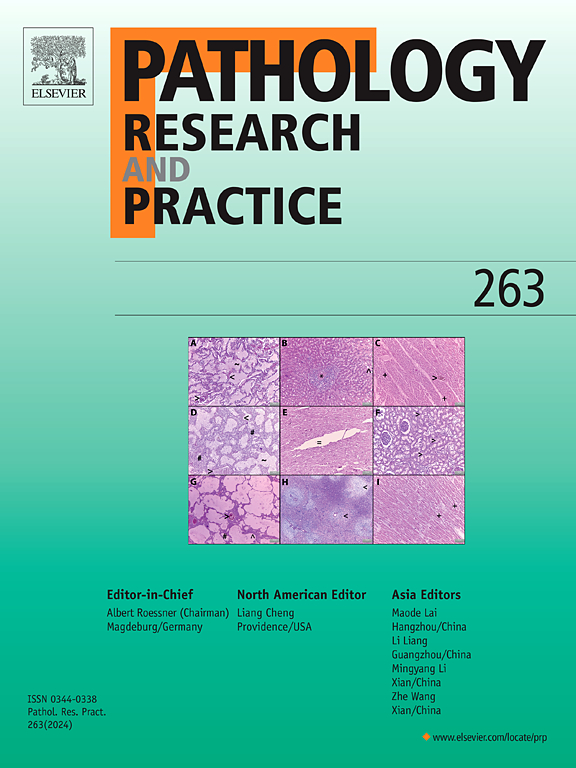LncRNA-mediated regulation of cisplatin response in breast cancer
IF 2.9
4区 医学
Q2 PATHOLOGY
引用次数: 0
Abstract
Breast cancer is a prevalent and aggressive disease characterized by high metastasis, recurrence, and mortality rates. While cisplatin is an effective chemotherapy drug, its use is limited by its toxic effects on the body. Despite advancements in therapeutic strategies, the therapeutic response is often unsatisfactory due to drug resistance, leading to poor prognosis. Recent studies have shown that cisplatin interacts with long non-coding RNAs (lncRNAs) and accelerates the development of resistance in tumor cells to therapy. This interaction highlights the complex mechanisms involved in the response of cancer cells to chemotherapy. Several lncRNAs have been identified as key players in mediating cisplatin resistance in breast cancer. These lncRNAs include SNHG15, HULC, HCP5, MT1JP, LncMat2B, DLX6-ASL, Linc00665, CARMN, and Lnc-EinRP44–3:6. These lncRNAs have been shown to target microRNAs and mRNAs and modulate the expression of genes involved in cisplatin resistance, which is important in treating breast cancer.
LncRNA 介导的乳腺癌顺铂反应调控。
乳腺癌是一种常见的侵袭性疾病,具有高转移率、高复发率和高死亡率的特点。顺铂是一种有效的化疗药物,但其对人体的毒性作用限制了它的使用。尽管治疗策略不断进步,但由于耐药性的存在,治疗效果往往不尽人意,导致预后不良。最近的研究表明,顺铂与长非编码 RNA(lncRNA)相互作用,加速了肿瘤细胞耐药性的产生。这种相互作用凸显了癌细胞对化疗反应的复杂机制。有几种 lncRNA 已被确定为介导乳腺癌顺铂耐药性的关键因素。这些lncRNA包括SNHG15、HULC、HCP5、MT1JP、LncMat2B、DLX6-ASL、Linc00665、CARMN和Lnc-EinRP44-3:6。这些lncRNAs已被证明以microRNAs和mRNAs为靶标,并调节涉及顺铂耐药性的基因的表达,这对治疗乳腺癌非常重要。
本文章由计算机程序翻译,如有差异,请以英文原文为准。
求助全文
约1分钟内获得全文
求助全文
来源期刊
CiteScore
5.00
自引率
3.60%
发文量
405
审稿时长
24 days
期刊介绍:
Pathology, Research and Practice provides accessible coverage of the most recent developments across the entire field of pathology: Reviews focus on recent progress in pathology, while Comments look at interesting current problems and at hypotheses for future developments in pathology. Original Papers present novel findings on all aspects of general, anatomic and molecular pathology. Rapid Communications inform readers on preliminary findings that may be relevant for further studies and need to be communicated quickly. Teaching Cases look at new aspects or special diagnostic problems of diseases and at case reports relevant for the pathologist''s practice.

 求助内容:
求助内容: 应助结果提醒方式:
应助结果提醒方式:


